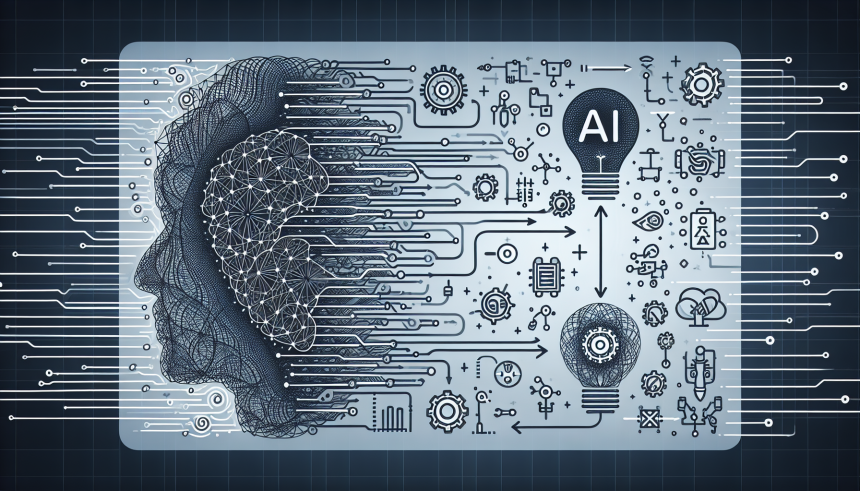Understanding AI Integration in Simplifying Processes
What is AI Integration?
AI integration refers to the incorporation of artificial intelligence technologies into existing systems and processes to enhance functionality and efficiency. The fundamental goal of AI integration is to enable organizations to automate mundane tasks, analyze vast amounts of data, and make informed decisions quickly.
Benefits of AI Integration
-
Enhanced Efficiency: By automating repetitive tasks such as data entry and customer service inquiries, AI frees up human resources. This allows employees to focus on higher-level responsibilities, thereby improving overall productivity.
-
Improved Decision-Making: AI can analyze complex data patterns quickly and provide insights that may not be immediately apparent. This capability enables organizations to make data-driven decisions with confidence, reducing the risk associated with human error.
-
Cost Reduction: Automating processes can significantly lower operational costs. With reduced manpower needed for routine tasks and increased productivity, businesses can allocate resources more efficiently.
-
Scalability: AI systems can easily adapt to increased workloads without the need for substantial infrastructure changes. This scalability is crucial for growing businesses that need to maintain efficiency while expanding their operations.
-
Better Customer Experience: AI-driven chatbots and virtual assistants facilitate real-time responses to customer inquiries, enhancing their interactions with the brand. By custom-tailoring the experience to individual customer preferences, businesses can build better relationships with their customers.
AI Technologies Involved in Integration
-
Machine Learning (ML): ML involves training algorithms to identify patterns and make predictions based on data. This technology is instrumental in various applications, including fraud detection, recommendation systems, and predictive analytics.
-
Natural Language Processing (NLP): With the help of NLP, machines can understand, interpret, and respond to human languages. Businesses use this technology in customer service to handle inquiries efficiently and in sentiment analysis to gauge customer opinions.
-
Robotic Process Automation (RPA): RPA automates rule-based processes that typically require human intervention. It is particularly useful in finance, HR, and supply chain management, where consistency and accuracy are paramount.
-
Computer Vision: This AI discipline enables machines to interpret and process visual information from the world. Organizations utilize computer vision in quality inspection, security surveillance, and retail analytics.
Key Steps for AI Integration
-
Identify Business Goals: The first step in a successful integration strategy is clearly defining the objectives. Questions to consider include: What processes need improvement? What are the expected outcomes?
-
Evaluate Existing Systems: Assess your current technological environment to identify compatibility issues and opportunities for enhancement. This evaluation should include infrastructure, software applications, and human resources.
-
Data Collection and Preparation: AI systems thrive on data. Gather historical and real-time data relevant to your objectives. Data must also be cleaned and structured to be effectively utilized by AI algorithms.
-
Choose the Right AI Tools: Selecting the appropriate technologies is crucial. Depending on your needs, you might opt for custom machine learning models, off-the-shelf software solutions, or cloud-based services.
-
Pilot Implementation: Begin with a pilot program to test the integration on a small scale. This allows for troubleshooting and fine-tuning before a broader rollout, ensuring minimal disruption to existing processes.
-
Training and Development: Training staff to work alongside new AI tools is essential for maximizing their effectiveness. Continuous education helps foster an AI-driven culture and enhances user adoption.
-
Monitor and Iterate: After implementation, continuously monitor AI performance against predefined key performance indicators (KPIs). Be prepared to iterate on your strategy based on real-world results and feedback.
Challenges in AI Integration
-
Resistance to Change: Many employees may resist adopting new technologies, fearing job displacement or the need to learn new skills. Effective change management strategies and communication can help mitigate these concerns.
-
Data Privacy and Security: Handling vast amounts of data raises concerns regarding privacy and security. Organizations must ensure compliance with regulations such as GDPR while implementing strong cybersecurity measures.
-
Integration Complexity: Legacy systems may not easily integrate with new AI solutions. Organizations often have to invest in system upgrades or even redesign processes to accommodate new technology.
-
Limited AI Expertise: The AI skill gap remains a significant challenge for many organizations. Investing in training or hiring knowledgeable personnel is essential for successful integration.
Use Cases of AI Integration
-
Healthcare: AI integration in healthcare has led to more accurate diagnostics and personalized treatment plans. For example, machine learning algorithms analyze medical images to detect conditions like cancer at earlier stages.
-
Manufacturing: Predictive maintenance powered by AI helps manufacturers foresee equipment failures before they occur, significantly reducing downtime and maintenance costs.
-
Retail: AI algorithms analyze consumer data to optimize inventory levels and create personalized shopping experiences. Retailers can anticipate trends and adjust stock levels accordingly.
-
Financial Services: AI is transforming how banks process transactions, detect fraud, and assess risk. Algorithms analyze transaction patterns to identify anomalies that could signify fraudulent activity.
-
Logistics: AI-driven optimization algorithms improve route planning and inventory management in logistics, reducing costs and enhancing service delivery times.
Conclusion
AI integration stands as a transformative force, enabling organizations to simplify processes and enhance overall functionality. Effective implementation involves a robust understanding of goals, existing systems, and the relevance of chosen technologies. As businesses continue to adapt to rapid technological advancements, those that harness the power of AI will position themselves for sustained success in an increasingly competitive landscape. By focusing on continuous improvement and embracing a culture of innovation, businesses can truly unlock the potential of AI integration.


